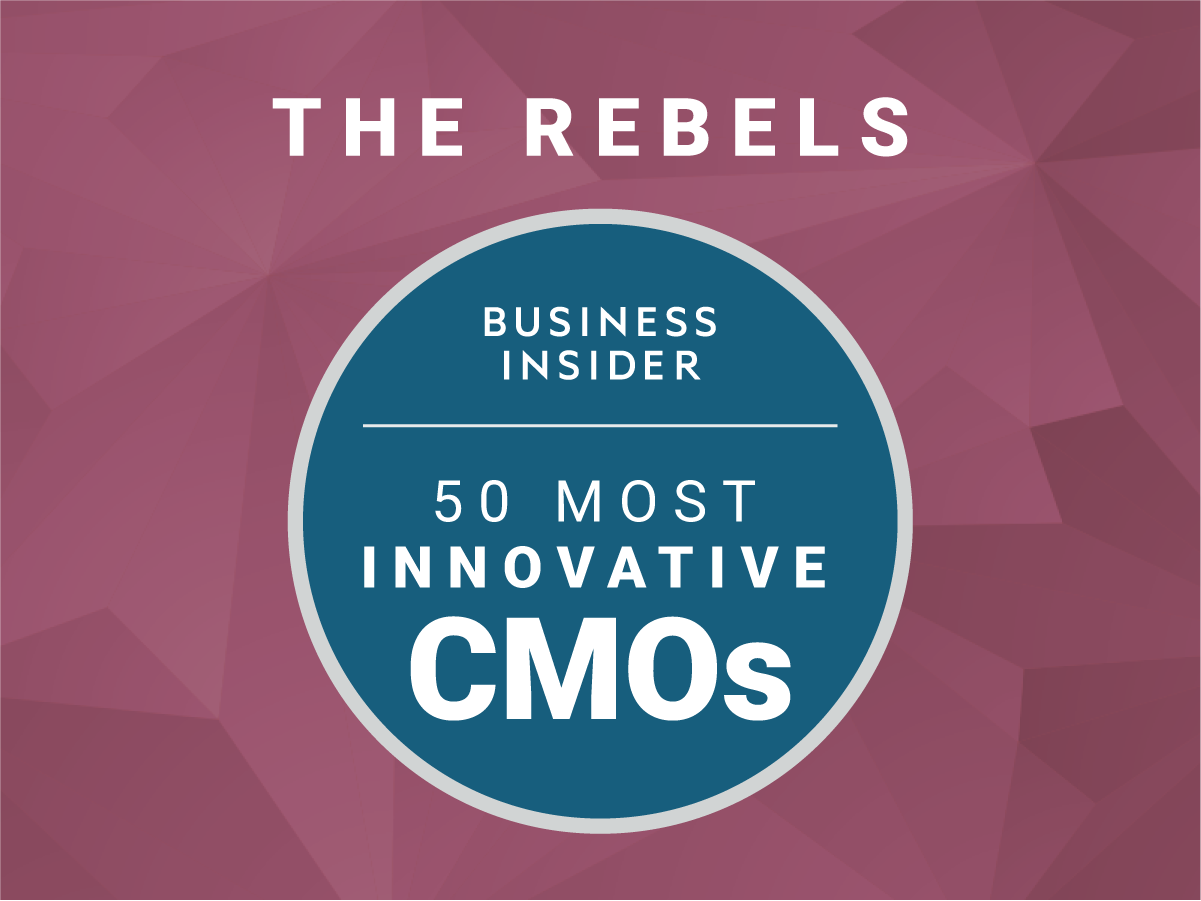Business Insider has published its ranking of the 50 most innovative CMOs in 2017.
These are The Rebels: the CMOs who are taking their marketing efforts in a completely different direction than their peers.
Scroll down to see which Rebel CMOs made the cut.
Antonio Lucio, CMO at HP

Lucio has been HP’s global chief marketing and communications officer since 2015 and is responsible for branding, global communications, demand generation as well as strategic events. Under Lucio’s leadership, HP has sought to reestablish a more emotional connection between the brand and its consumers. But over the past one year, a bigger focus for the brand has been addressing the industry’s diversity challenges. After demanding that its agencies move the needle on the number of women in the teams servicing the brand last year, this year, HP turned its attention to minorities.
Kelly Campbell, SVP and CMO at Hulu

Campbell joined the streaming upstart this summer, and saw the rollout of Hulu's first national ad campaign in five years featuring a celebrity spokesperson this past September. "For the Audience" featured Anna Kendrick and celebrated the service's new look and feel in four TV commercials aired nationally. The company also scaled new, uncharted heights with teh dark original series "The Handmaid's Tale." Hulu not only swept numerous awards at the Emmy's, but went home with the top honors - the first time that a streaming service took the Best Series award.
Roger Solé, CMO, Sprint

Solé hit the ground running when he took over as Sprint's CMO, launching the "That Wireless Guy" campaign during the NBA Finals, snatching up Paul Marcarelli, the face of competitor Verizon's ads. But this year Sprint created waves when it followed in the footsteps of brands like Allstate, Stubhub, and Unilever, taking digital ad buying in-house.
John Dillon, CMO at Denny's

Denny's is to social media today what Charmin was years ago: a squirt of sass and a huge dollop of personality. The brand, led by Dillon, is unabashedly snarky, unafraid to use some slang and poke fun at its competitors. It hit a home run this March, when a meme-inspired tweet it posted became one of the most shared and liked branded content posts in the history of Twitter. At a time when a brand can easily appear to be tone-deaf, or worse, thirsty, Denny's has managed to remain culturally relevant with a finger on the pulse of pop culture.
Meredith Kopit Levin, COO at The New York Times

Not long ago, the New York Times was borrowing money from Mexican billionaires just to stay afloat. It was even labeled by some as "failing." Suddenly the Time is the envy of many in the newspaper business for its record growth in digital subscriptions, and under Kopit Levin, its reinvention as a direct to consumer business.
Kristin Lemkau, CMO at JP Morgan Chase

Until last year, Chase advertised on 400,000 websites. In March of this year, Lemkau slashed that number to 5,000, because only 12,000 of those sites were actually generating any clicks on Chase ads. In making this radical decision, Lemkau not only helped Chase curtail wasteful expenditure, but also shed light on the murky world of digital programmatic ads. Today, Chase has expanded its footprint back up to 10,000 sites. Lemkau continued pushing the brand forward on its winning streak after an uber-successful digital marketing push around its card, the Sapphire Reserve, in 2016.
Diego Scotti, CMO at Verizon

Madison Avenue is not known for being very diverse. Yet its lack of diversity has been brushed under the carpet for years, until several big name marketers decided to take the matter into their own hands. Leading that charge is Verizon, whose chief marketing officer Scotti sent out a letterto its agency partners a year ago, calling on them to improve the number of women and people of color working for them. This year, the telecom company took its efforts a step further by unveiling its very own diversity fellowship program. The company has also been investing in broader industry and community efforts like The One Club and the Marcus Graham Project, as well as working to incorporate diversity into its creative output.
Keith Weed, CMO at Unilever

Unilever too has been at the forefront of the movement to fix digital advertising, with its marketing chief Weed vociferously demanding more accountability on numerous industry platforms. Weed has specifically championed the issues of viewability, transparency and cross-platform measurement, pushing the industry to take on the challenges head on. And along the way, he has ensured that Unilever remains on the cutting edge of marketing. It merged data with content in the perfect marriage with All Things Hair, for example, a YouTube channel of video styling tips from leading vloggers that was built by combining search terms and trend prediction to provide users relevant, useful and authentic content.
Marc Pritchard, Chief Brand Officer, P&G

If there is a torchbearer in the ad industry's fight to clean up digital advertising, it's Pritchard. The Procter & Gamble chief brand officer made waves at the very onset of the year, when he warned that the world's largest advertiser would scale back on its ad spending unless things were fixed. And he has lived up to his word and how.
Under his leadership, the consumer-packaged goods giant slashed spending on digital ads by $100 million, and still witnessed a growth in sales. Pritchard's next battle is focused on shifting the conversation from brand safety to raising the bar on "quality media content." And P&G is once again at the forefront of making that change happen.

